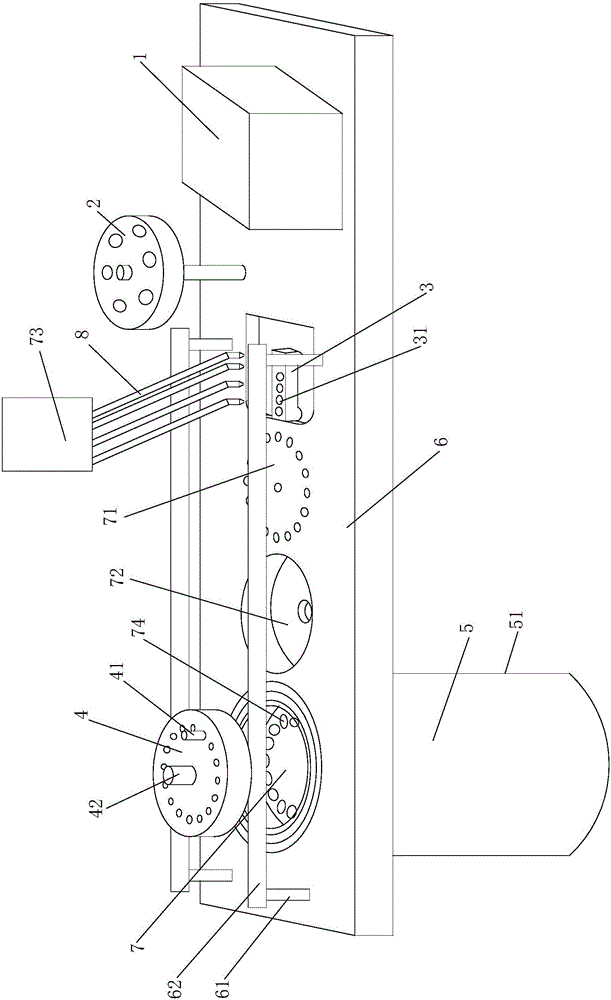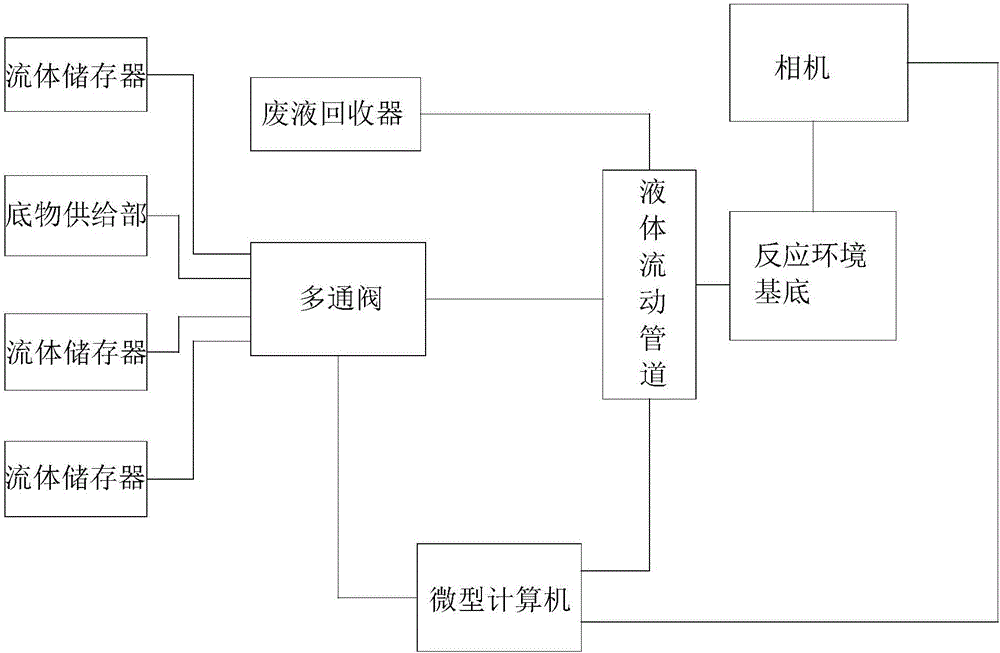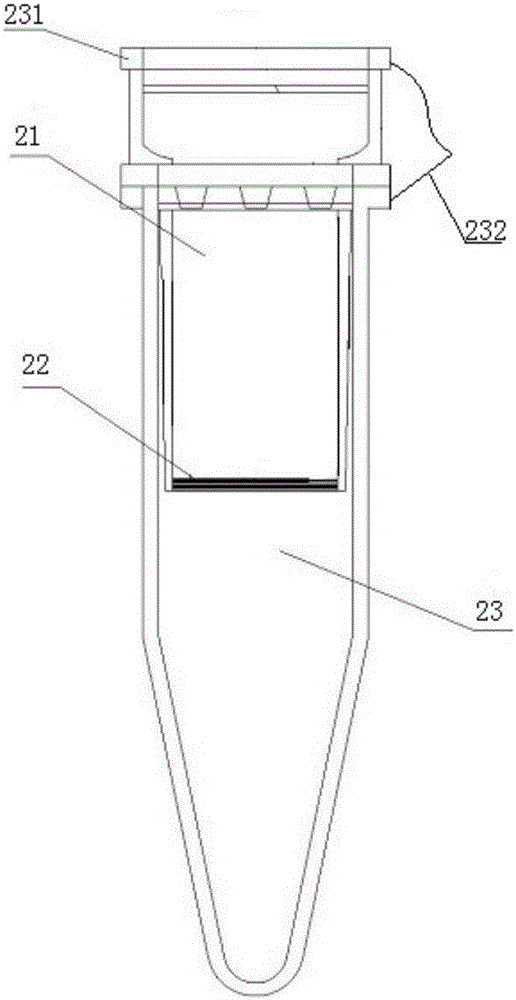Nucleic acid sequencing device and system
A nucleic acid sequencing and detection device technology, applied in the field of pyrosequencing-based nucleic acid sequencing devices and nucleic acid sequencing devices, can solve the problem of separation and detection results accuracy interference, inflexible DNA single-strand collection methods, and high cost of DNA single-strand separation. problems, to avoid a single product structure, enrich the structure and variety, and ensure the quality and efficiency.
- Summary
- Abstract
- Description
- Claims
- Application Information
AI Technical Summary
Problems solved by technology
Method used
Image
Examples
Embodiment 1
[0096] Figure 1 to Figure 3 The first embodiment of the nucleic acid sequencing device of the present invention is shown. The nucleic acid sequencing device of the present invention can be used for pyrosequencing detection and analysis of DNA sequences, the DNA sequence to be sequenced is a target sequence, and pyrosequencing is performed after the target DNA sequence is amplified.
[0097] The nucleic acid sequencing device of this embodiment includes a sample area, a reaction area, a detection area and a control area. The sample area, reaction area and detection area are installed on the analysis table 6, and the sample area, reaction area and detection area are monitored and controlled by the control area. The whole analysis process is operated by manipulator.
[0098] The sample area includes an electrophoresis apparatus 1 and a separation disc 2 . The electrophoresis instrument 1 is provided with a gel platform and light-emitting diodes, and agarose beads are arranged...
Embodiment 2
[0149] Because a chain collected on the filter membrane 22 needs to be sucked out or poured out, such a collection method may cause a certain collection loss, so the inventor preferably arranges the filter column 21 as a double-head structure with two ends exchanged, and the filter membrane 22 is located on the non-end surface of the filter column 21. When collection is required, replace the two ends of the filter column 21 and use conventional methods, such as centrifugation, to elute all DNA single strands on the filter membrane 22 to reduce sample loss.
[0150] Such as Figure 5 As shown, the difference between this embodiment and embodiment 1 is that the filter column 21 in embodiment 2 is a hollow cylinder with a symmetrical structure up and down, and the filter membrane 22 is vertically located in the middle of the hollow cylinder, and the filter column 21 can be For replacement use, the inner diameter of the hollow cylinder is 4.5mm, and the diameter of the filter memb...
Embodiment 3
[0154] Such as Figure 6 As shown, the difference between this embodiment and Example 1 is that the filter column 21 of the DNA single-strand separation device in Example 3 adopts a space truncated circular structure, and the filter membrane 22 is arranged on the common top surface of the two circular truncated filter columns 21 , the diameter of the top surface of the circular truncated filter column 21 is consistent with the diameter of the filter membrane 22, and the two sides of the filter membrane 22 are provided with a pressing mechanism (not shown in the figure), so that the fixed filter membrane 22 cannot be displaced. The side wall of the opening lower end of the frustum-shaped filter column is provided with a boss to ensure that it can be fixed on the boss of the collecting pipe 23 when the two ends are reversed.
[0155] The separation method using the separation device belonging to this embodiment is the same as the step described in embodiment 1, and the differenc...
PUM
| Property | Measurement | Unit |
|---|---|---|
| diameter | aaaaa | aaaaa |
| diameter | aaaaa | aaaaa |
| diameter | aaaaa | aaaaa |
Abstract
Description
Claims
Application Information
 Login to View More
Login to View More - R&D
- Intellectual Property
- Life Sciences
- Materials
- Tech Scout
- Unparalleled Data Quality
- Higher Quality Content
- 60% Fewer Hallucinations
Browse by: Latest US Patents, China's latest patents, Technical Efficacy Thesaurus, Application Domain, Technology Topic, Popular Technical Reports.
© 2025 PatSnap. All rights reserved.Legal|Privacy policy|Modern Slavery Act Transparency Statement|Sitemap|About US| Contact US: help@patsnap.com



